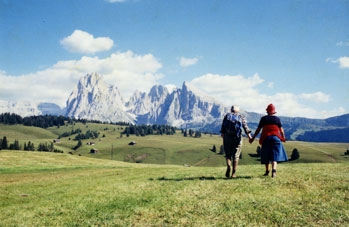ArtReview sent a questionnaire to a selection of the artists exhibiting in various national pavilions of the Venice Biennale (and some curators), the responses to which are being published daily in May, in the run up to the Biennale opening. Bartolomeo Pietromarchi is curating group exhibition vice versa for the Italian pavilion. The pavilion is in Arsenale, Tese delle Vergini.
What can you tell us about your plans for Venice?
I have been working on the project for the Italian Pavilion at the Venice Biennale for a year and it has been an extremely stimulating experience; it is in fact a wide and open project which becomes a cause for reflection, enriched by the encounter and the confrontation between different disciplines. Coming from the idea expressed by the philosopher Giorgio Agamben in Categorie Italiane, that in order to interpret Italian culture it is necessary to individuate a series of diametrically linked concepts, I have configured the vice versa exhibition as seven primary binomials whose purpose is to comment on contemporary art. Each binomial followed naturally from affinities between its components’ poetics rather than being imposed by a dictatorial curatorial decision.
Are you approaching the show in a different way to how you would with a ‘normal’ exhibition?
Undoubtedly exhibiting at the Venice Biennial is for the artists a huge responsibility, given the fact that they are asked to represent the country and in some ways signify its artistic tendencies. This is a responsibility which obviously also concerns the curator, in addition to the necessity of coordinating the pavilion exhibition with the general setting of the artistic manifestation, which is, in this case, Massimiliano Gioni’s Palazzo Enciclopedico. However, in potent artistic exhibitions such as at Venice it is especially important that the artists remain faithful to their poetry and not succumb to the distortions of psychological and media pressure. This is an attitude I have tried to support with a specific kind of curatorial methodology.
What does it mean to curatorially ‘represent’ a country?
To me it meant tracing fundamental guidelines which can help visitors to deeply understand the cultural under-layer from which most of Italian culture proceeds. If it is in fact true that artists should symbolise, through their works, the large-scale artistic tendencies reflecting the key subjects confronting the contemporary period of a particular country, it is also important to generally set up the exhibition to underline the peculiarity of the local approach; in the case of the Italian pavilion I have tried to restore the dialectic and dual conceptual structures which have been dominant in the national cultural landscape.
What audience are you addressing with the work? The masses of peer curators, gallerists and critics concentrated around the opening or the general public who come through over the following months?
As I was saying, the Italian pavilion configuration is not limited to an artistic sphere but it wants to be a means to investigate intrinsic Italian features which reveal themselves in various disciplines and parallel fields. The exhibition is therefore addressed to a very diverse audience with the sensibility to understand the artistic proposal and simultaneously the cultural project in its wider meaning.
What are your earliest or best memories of the biennale?
One of my most powerful memories of the Venice Biennial must be visiting the Hans Haacke German Pavilion in 1993, which I particularly remember. I was surprised by its capability to successfully restore the desired psychological sensation by the physical modelling of environment, but above all I had the sensation of being attendant to one of the most felt and subtle historical analyses possible by an artistic perspective, which precisely represented the specific feel of a particular country through an incredible visual impact. The artist created a space in which the visitor was able to deeply understand and intensely feel the power of art on their state of mind.
You’ll no doubt be very busy, but what else are you looking forward to seeing?
I am now focused on the Italian pavilion at the biennial and MACRO (Museo d’Arte Contemporanea di Roma), which I am directing with steady dedication and intensity. Right now I am completely absorbed by these two projects.
